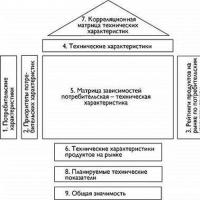Bird borreliosis. Avian borreliosis (spirochetosis, treponemonosis) (borreliosis)
Avian spirochetosis is a disease caused by a spirochete, which is transmitted from sick birds to healthy birds by argasid mites. All types of poultry can be infected with spirochetosis. The disease can take the form of devastating epizootics and cause great economic damage.
Spirochetosis, first established by Sakharov (1890) in Transcaucasia, is widespread throughout the globe, especially in countries with warm climates where ticks that carry this disease live. In Russia, avian spirochetosis is observed in the Caucasus, Central Asian republics and some areas of the southeastern regions.
Etiology. The causative agent - Treponema gallinarum - has a corkscrew-shaped body 5-30 microns long with a thickness of about 0.5 microns; number of turns 5-15. In the blood of a sick bird, spirochetes are highly mobile. Reproduction occurs by transverse division in the blood and internal organs. In the blood outside the animal body, spirochetes retain the ability to infect for up to 50 days.
Spirochetosis is transmitted by ticks of the genus Argas. They live in bird rooms (in steppes, floor cracks, etc.) and attack them mainly at night. Having sucked on infected blood, ticks retain the ability to infect susceptible birds for a long time.
All stages of ticks (larvae, nymphs and mature forms) are capable of causing disease.
Biology. Spirochetes pass in ticks from one developmental stage to another (for example, from a larva to a nymph) and from one generation to another (for example, from an infected female through eggs to a larva, etc.). Reproduction of spirochetes in the body of a tick can occur only at a sufficiently high temperature (not lower than 15°); Likewise, the development of mites occurs most intensively in hot weather, when outbreaks of spirochetosis are usually observed.
Susceptibility. In addition to poultry, sparrows, canaries and other birds are susceptible to Treponema gallinarum. Small laboratory animals are not infected, with the exception of white mice, in which spirochetes can be detected for a short period after infection and then disappear.

Clinical picture. The incubation period lasts 4-7 days. The first sign of the disease is an increase in body temperature to 42-43°; diarrhea appears, loss of appetite, severe thirst, lethargy, drowsiness; the bird stops laying eggs and loses a lot of weight. The mucous membranes become anemic.
Death may occur 4-6 days after the first signs of the disease appear. Sometimes the disease takes a longer course and is accompanied by paralysis of various parts of the body; in these cases, death occurs within 1.5-2 weeks. Chickens have the highest mortality rate. Sometimes there is a temporary improvement in the bird's condition, which is then replaced by a recurrence of painful signs, and the bird dies due to symptoms of weakness and paralysis. Before death, spirochetes most often disappear from the peripheral blood. After recovering from the disease, the bird becomes for a long time not susceptible to spirochetosis.
Pathological and anatomical changes. At autopsy, an enlarged liver is found, on the surface of which gray-yellow spots are found, an enlarged spleen, pronounced anemia and gelatinous edema of the heart sac.
Diagnosis. The disease is recognized by microscopic examination of freshly collected blood, in the form of a crushed drop, or by examination of conventionally stained smears prepared from the blood of diseased birds. When testing blood for spirochetes, you can also use next method. A drop of blood obtained from the bird's comb is placed on a glass slide; To this drop add a drop of ink equal in volume to it. The drops are mixed, after which a smear is prepared. 1-2 minutes after the smear has dried, it is examined under a microscope. With the atom method, spirochetes become clearly visible on the dark field of the smear in the form of white formations.
To exclude other diseases of birds (chicken nasterellosis, pullorosis, etc.), they resort to bacteriological research (obtaining cultures).
Treatment carried out mainly with arsenic preparations. One of the most accessible is atoxyl; an aqueous solution is used in a dose of 0.1 per 1 kg of live weight. Novarsenol is also used at a dose of 0.03 per 1 kg of live weight. Both drugs are administered intramuscularly. The effect of the drugs is felt the next day: the spirochetes disappear from the blood, and the bird quickly recovers. The use of these drugs can cure even severe forms of the disease.
Prevention should be aimed primarily at the complete destruction of tick vectors in poultry houses. Crevices, grooves, etc., where mites usually accumulate, are thoroughly coated with kerosene, oil, creolin solution and other disinfectants. When transporting birds, it is necessary to pay attention to ensure that ticks are not introduced into the farms with boxes in which the transported birds are placed. Transferring the bird to a new room (especially one where there have previously been cases of spirochetosis) can only be done after the mites have been completely destroyed.
Control measures. If a disease occurs, sick birds are isolated and treated. To prevent the spread of spirochetosis, it is highly advisable to administer specific drugs to all healthy birds.
A measure that will help protect the chicken population from spirochetosis. Spirochetosis is a dangerous disease poultry, including chickens. The peak incidence occurs in the warm months - from April to October. The causative agent is a spirochete - a bacterium with a corkscrew, curled shape.
The disease is acute and is characterized by depression, fever, and paralysis. The source of infection is ticks and sick birds.
Spirochete-infected chickens die 8–10 days after the pathogen enters the body. Mortality from spirochetosis reaches 80%. In this regard, farms and private households suffer significant losses.
At the same time, morbidity can be prevented if preventive measures are taken. - one of the most effective methods aimed at preventing epidemics. It is used in veterinary medicine against spirochetosis in chickens. inactivated dry vaccine(trade name of the drug is Acarivac).
Properties, composition and release form of the drug
The vaccine is intended for the prevention of spirochetosis in chickens in enterprises where there is a threat of infection and in safe farms. Immunity is formed in on the 3rd–4th day after administration of the drug, and remains for the next 12 months.
The main active ingredient of the prophylactic agent is industrial blood cultures of spirochetes. Strains used Budenovsk, Volgograd, MT, ST, STS, inactivated by formaldehyde. Sucrose and gelatin are used as additional substances.
Dry vaccine against spirochetosis is a morphic or amorphous-crystalline substance red-brown color. The dry mass dissolves well in boiled water or saline. When ready for use, the product is an opalescent dark red liquid. produced:
- in ampoules of 120 or 240 doses;
- in bottles of 360 or 720 doses.
Vaccine preparation and administration
The ampoule is opened, the dry mixture is ground into powder using a sterile glass or metal stick, then poured into pre-measured cooled boiled water or saline solution.
For this For 1 ml of vaccine, take 55–60 ml of solvent. The container in which mixing is carried out must also be sterile. Then shake the container until the solid particles of the dry substance are completely dissolved.
The finished product is used no later than 2–3 hours from the moment of mixing. The remaining injection solution is disposed of after this period.The vaccine is administered intramuscularly once. The following dosages are used:
After the introduction of the vaccine against spirochetosis, chickens are under observation at least seven days. At this time, the herd is transferred to a fortified diet rich in vitamins and other
Cautions
The vaccine is prohibited from being used on disadvantaged farms where chickens are infected with one of the following: infections:
- plague;
- diphtheria;
- paratyphoid
- infectious laryngotracheitis (ILP);
- mycoplasmosis.
Individuals are not allowed to participate in the procedure who were found to have:
- developmental deficiency;
- symptoms of anemia;
- various injuries;
- signs .
Before use, ampoules are carefully inspected. If the container is damaged, then such a dose is rejected. Otherwise, unexpected side effects may occur. The same applies if mold is found in the preparation itself.
The product is not used to vaccinate chickens under 30 days old.
Additional safety measures, storage conditions
To assess the effectiveness of vaccination against spirochetosis, after a week it is recommended to draw up a report indicating epizootic state of the enterprise before the introduction of the drug, number of vaccinated chickens, age groups.
The vaccine is stored in a dry place, reliably protected from sunlight, maintaining a temperature of 2...8 °C. The drug retains its properties for 12 months from the date of release.This instruction is provided for general information. Before using the purchased product, you must carefully read the manufacturer's recommendations. It is important to remember that only strict adherence to the rules for preparation and administration guarantees the effectiveness and safety of the vaccine.
Borreliosis (spirochetosis, treponemosis) is a vector-borne disease of domestic and wild birds, characterized by fever, depression, anemia, drowsiness, nervous phenomena and high mortality. Chickens, geese, and less commonly ducks and turkeys, as well as wild birds, are affected.
Borreliosis is widespread in MANY countries of the world, including Fig. 139. Borrelia anserinum in warm climates. In the territory of bird blood
CIS is registered in Crimea, Central Asia, Kazakhstan, and the Caucasus.
Pathogen. Borrelia gallinarum (Spirochaeta anserinum) belongs to the phylum Protophyta, order Spirochaetales.
Borrelia have a thread-like shape, twisting in the form of a spiral 3-30 microns long and 0.2-0.4 microns thick. The number of curls is 9-12 (Fig. 139). Borrelia can move forward, quickly screwing in like a corkscrew. They reproduce by transverse division. They grow well on chick embryos.
Developmental biology. Borrelia is transmitted from sick birds to healthy birds by argas mites (Argas persicus, etc.), dermanissus mites (Dermanyssus gallinae) and bedbugs (Cimex lectularius). In addition, Borrelia can be transmitted through ticks of the genus Omithodorus. Mechanical carriers can be lice beetles of the genus Meporop. Pathogens are transmitted transphasically and transovarially by ticks. In the body of susceptible birds and ticks, reproduction occurs by transverse division. In ticks, Borrelia is found in the intestinal lumen, central nerve trunk, salivary glands and reproductive organs. In the body of birds, the pathogen can be found in the liver, spleen, bone marrow, and blood plasma.
Epizootological data. The main carrier of borreliosis is argasid mites, which create a natural focus of the disease. Infection occurs when domestic or wild birds are attacked by tick vectors or bedbugs. The pathogen can be transferred through tick vectors from one bird species to another. Borreliosis is a seasonal disease, since argasid mites are most active in the warm season. The spread of the disease is wild birds, as they can be parasitized by tick larvae for a long time. Borrelia remain in the body of ticks for up to 8 years.
Pathogenesis and immunity. Borrelia in the body of birds quickly multiply in the internal organs and blood. Mass reproduction
is accompanied by the release of toxic substances that affect the central nervous system, cause metabolic disorders, lysis of red blood cells, and inhibit hematopoiesis.
After recovery, the bird acquires strong immunity. It is quite long (up to 3 years). However, there is data
that different strains of Borrelia do not cause immunity to a heterologous strain.
Symptoms of the disease. The incubation period lasts 2-7 days. The disease can occur acutely, subacutely and chronically.
In acute cases, body temperature rises to 42-43 °C. Appetite sharply worsens and thirst appears. Anemia and exhaustion quickly develop, and the comb and earrings become pale. Then a drowsy state and nervous phenomena appear, especially in goslings. Diarrhea may occur. The bird is weakening and moving with difficulty. Borrelia multiplying in the blood can form balls, clogging blood vessels, which aggravates the course of the disease. Bird mortality can reach 30-90%. Sometimes the acute course of the disease resolves without death. The course of the disease drags on for 2-3 weeks. The bird gradually weakens, and paralysis and paresis of the limbs are often observed.
The chronic course of borreliosis is more often observed among adult birds. The course of the disease is complicated by helminthiases, eimeriosis, colibacillosis, vitamin deficiencies, etc.
Pathological changes. In dead birds, exhaustion, anemic mucous and serous membranes, and massive hemorrhages on the surface are noted. internal organs, enlargement of the spleen by 6-8 times, degeneration of parenchymal organs. The mucous membranes of the small and large intestines are hyperemic, with pinpoint hemorrhages, and foul-smelling feed masses in the lumen. The heart muscle has the appearance of boiled meat with hemorrhages.
Diagnostics. The diagnosis is made on the basis of epidemiological data, clinical signs and microscopic examination of smears prepared from blood, bone marrow and liver. Smears are stained according to Romanovsky, Burri (black ink) or Morozov.
Borreliosis is differentiated from aegyptianellosis, plague, tick-borne toxicosis and other diseases. There may be a mixed course of borreliosis with eimeriosis (A.I. Yatusevich).
Treatment. A high effect is achieved by using a 1% solution of novarsenol intramuscularly at a dose of 0.02-0.05 g/kg. Less effective is the use of penicillin at a dose of 20-25 thousand IU, bicillin-6 at a dose of 50 thousand IU/kg intramuscularly once. There are reports of a good effect from the oral administration of osarsol (0.03 g/kg 2 times a day in a 1% sodium bicarbonate solution), chlortetracycline hydrochloride orally 10-20 mg once a day, morphocycline - 60 mg/kg orally .
Borreliosis (spirochetosis, treponemosis) (borreliosis) is a vector-borne disease of domestic and wild birds, characterized by fever, depression, anemia and nervous phenomena.
Etiology.
Epizootology.
Symptoms and course.
The disease can occur acutely, subacutely and chronically. In acute cases, body temperature rises to 42-43o. Appetite decreases and thirst appears. Attrition develops quickly, the comb and earrings are pale. Then comes drowsiness and nervous phenomena. Diarrhea may occur. If the disease drags on for 2-3 weeks, the bird gradually weakens, paresis and paralysis of the limbs develop. The chronic course is more often observed among adult birds.
Diagnosis
diagnosed on the basis of epidemiological data, clinical signs and microscopic examination of blood smears. Smears are stained according to Romanovsky, Buri (black ink) or Morozov.
Treatment.
A sick bird is injected intramuscularly with a 1% solution of novarsenol at a dose of 0.02-0.05 g/kg; bicilin intramuscularly at 50,000 IU/kg; chlortetracycline hydrochloride orally, 0.06 g/kg; osarsol orally 0.03 g/kg 2 times a day in a 1% solution of sodium bicarbonate.
Prevention and control measures.
Poultry houses are periodically decontaminated. In poultry farms unaffected by borreliosis, all healthy birds are vaccinated twice with an interval of 8-12 days.
 History of Citizen Watches Citizen watches - a Japanese miracle of precision
History of Citizen Watches Citizen watches - a Japanese miracle of precision Organization of development of new products Organization and planning of production
Organization of development of new products Organization and planning of production Guidelines for the use of time sheets
Guidelines for the use of time sheets High resolution photo of the surface of Mars (43 photos) Images of Mars by NASA
High resolution photo of the surface of Mars (43 photos) Images of Mars by NASA Job description of production manager (chef)
Job description of production manager (chef) Presentation - corrosion of metals and methods of protection against corrosion Chemical corrosion is caused by interaction
Presentation - corrosion of metals and methods of protection against corrosion Chemical corrosion is caused by interaction Management forces you to go to cleanup, threatening to fire you if you don’t show up. Cleanup on a day off.
Management forces you to go to cleanup, threatening to fire you if you don’t show up. Cleanup on a day off.